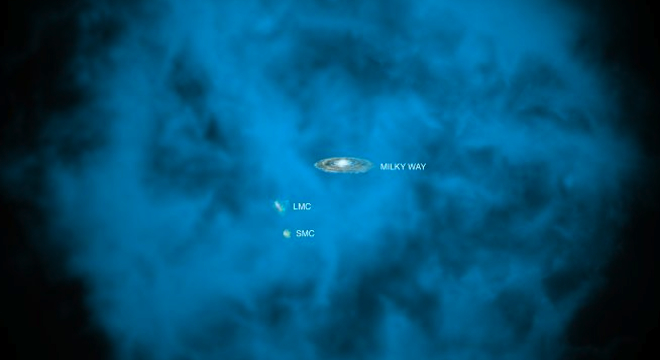Scientists using NASA’s orbital X-ray space telescope Chandra have discovered that our own Milky Way Galaxy has a massive halo of superheated gas surrounding it, the agency announced on Monday.
It’s difficult to conceive of just how large the hot gas halo is, but NASA notes it could extend more than 300,000 light years out from its center, and have a mass equivalent between 10 billion suns and 60 billion suns, or just as many or more than all of the stars in the Milky Way itself, at a temperature “a few hundred times hotter” than the surface of our Sun (between 1 million and 2.5 million kelvin).
The hot gas halo could also help solve the great cosmic mystery of the missing baryons, or particles including protons and neutrons which ancient galaxies have in abundance and which are thought to have composed a sixth of the matter at the universe’s dawn, but which are found in about half that amount in our galaxy and its neighbors.
The newly discovered gas halo itself could be where the baryons have ended up during the course of the universe’s evolution.
Previous studies indicated that the Milky Way, and other nearby galaxies, had a “warm” gas halo (between 100,000 and over 1 million kelvin), but this is the first time evidence of a “hot” gas halo has been uncovered.
NASA released an illustration of the hot gas halo around the Milky Way, seen at the top of this article and in its original ratio below. The Milky Way itself is pictured as a tiny formation in the center, with neighboring galaxies the Small and Large Magellanic Clouds, indicated by their respective abbreviations off to the Milky Way’s lower left.







